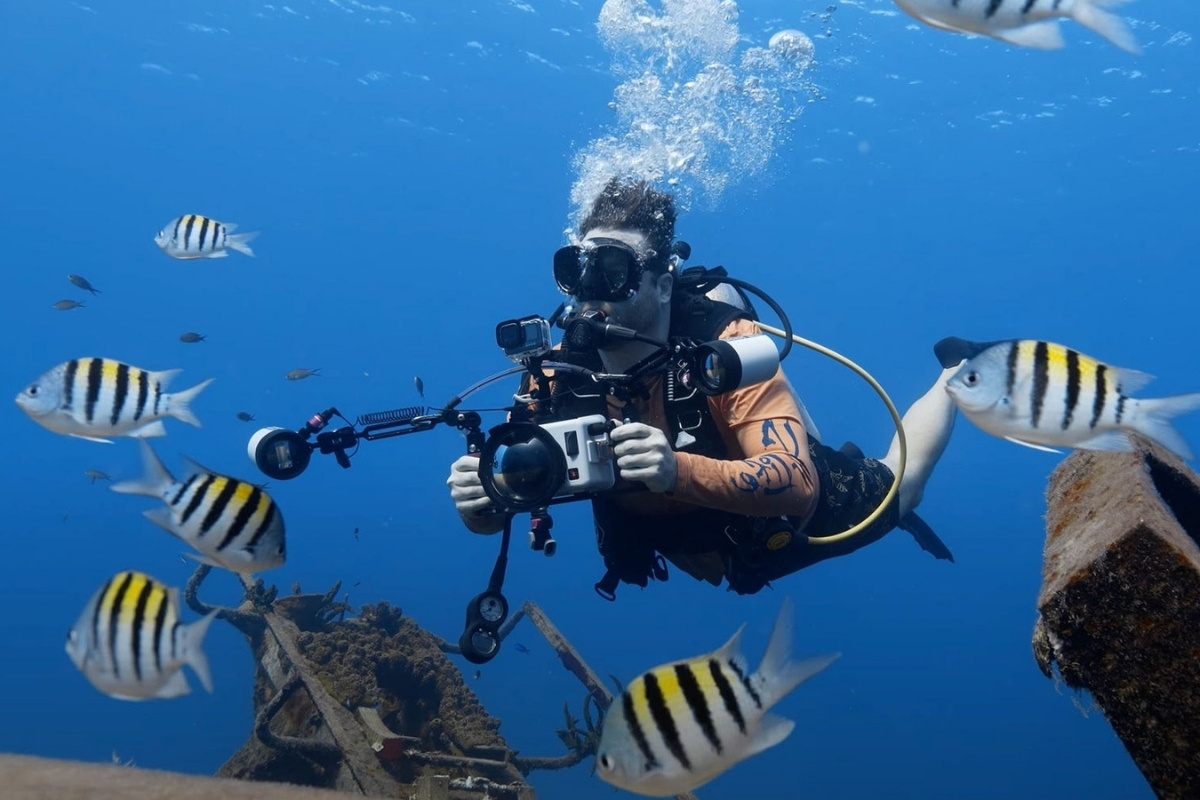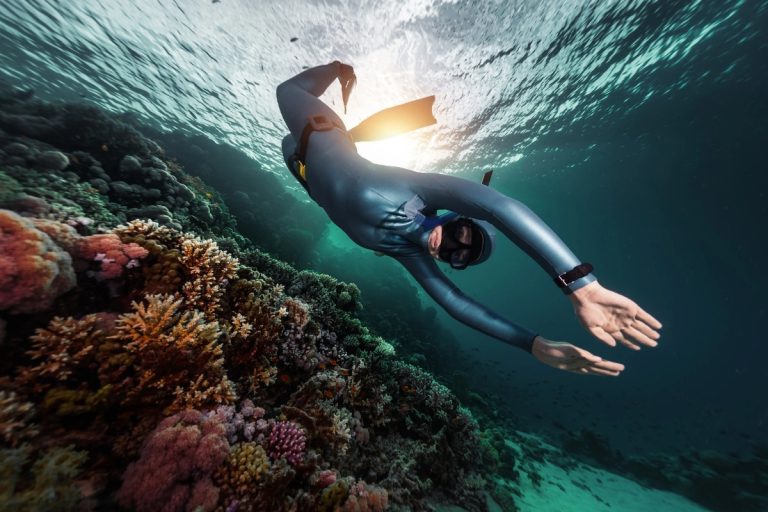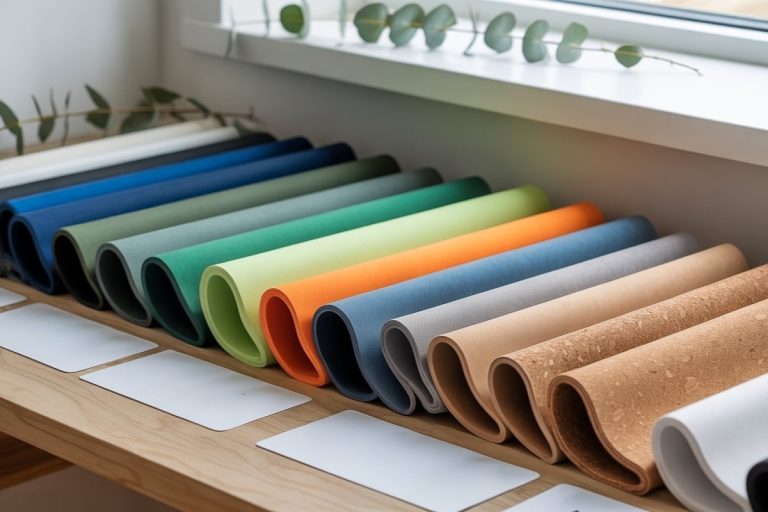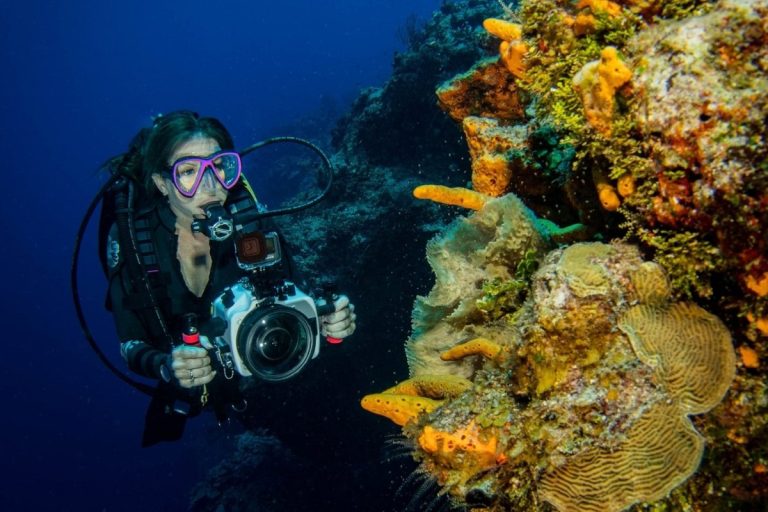- Understanding Strobe & Video Light Placement
- Techniques for Strobe Placement
- Optimal Settings for Different Depths
- Managing Shadows and Coverage
- Avoiding Backscatter
- Post-Processing Techniques
- Choosing the Right Equipment
- Future Trends in Underwater Photography
- Frequently Asked Questions
- Illuminating the Depths of Underwater Photography
Understanding Strobe & Video Light Placement
Proper lighting placement forms the foundation of exceptional underwater photography. The underwater environment presents unique challenges that surface photographers never encounter, making strategic light positioning absolutely critical for capturing vibrant, professional-quality images. Water absorbs light differently across the spectrum, with reds disappearing first, followed by oranges and yellows as you descend deeper. This natural filtration means that without artificial lighting, your images will appear blue-green and lack the rich colors that make underwater photography so captivating.
The physics of underwater lighting behavior differs dramatically from terrestrial photography. Light travels more slowly through water, scatters more readily, and creates different shadow patterns than in air. Understanding these principles helps photographers make informed decisions about where to position their strobes and video lights for maximum impact.
The Importance of Proper Lighting
Effective lighting placement can transform mediocre underwater shots into breathtaking masterpieces. When positioned correctly, strobes restore natural colors, create appealing contrast, and add dimension to your subjects. Poor lighting placement, however, results in flat, colorless images plagued by harsh shadows or distracting backscatter.
The key lies in mimicking natural sunlight patterns while compensating for water’s light-absorbing properties. Proper placement ensures even illumination across your subject while maintaining natural-looking shadows that provide depth and dimension.
Types of Lighting Used in Underwater Photography
Underwater photographers typically choose between strobes and continuous video lights, each offering distinct advantages. Strobes provide powerful bursts of light that freeze motion and deliver excellent color rendition, making them ideal for still photography. They conserve battery life by only firing when needed and produce minimal heat.
Video lights offer continuous illumination, allowing photographers to see exactly how light falls on their subjects before shooting. They work well for both photography and videography, though they consume more battery power and may disturb marine life with constant illumination.
Common Mistakes in Light Placement
Many underwater photographers position their lights too close to the camera lens, creating unwanted backscatter from particles in the water column. Another frequent error involves placing lights at equal distances from the subject, resulting in flat, shadowless images that lack visual interest.
Beginners often use excessive lighting power, washing out colors and creating harsh contrasts. Learning to balance light intensity with proper positioning takes practice but dramatically improves image quality once mastered.
Techniques for Strobe Placement
Mastering strobe placement techniques separates amateur underwater photographers from professionals. The fundamental principle involves positioning lights to complement natural lighting patterns while accounting for water’s unique optical properties. Successful photographers develop an intuitive understanding of how light behaves underwater and adjust their techniques accordingly.
Professional underwater photographers emphasize the importance of experimenting with different angles and distances to achieve desired effects. Each diving location presents unique conditions, from crystal-clear tropical waters to murky temperate seas, requiring adaptive lighting strategies. Understanding these tips for lighting your subjects becomes crucial for consistent results across varying environments.
The relationship between strobe position and subject distance plays a critical role in image quality. Closer subjects require different lighting approaches than distant ones, and photographers must adjust their techniques accordingly to maintain proper exposure and color balance.
Staying Close to Your Subjects
Proximity remains one of the most important factors in underwater photography success. Moving closer to your subjects reduces the amount of water between your camera and the subject, minimizing color loss and improving overall image clarity. This principle applies equally to lighting placement, as closer strobes provide more effective illumination with less power consumption.
When working close to subjects, photographers can use lower strobe power settings, preserving battery life while achieving better color saturation. The reduced water column also means less opportunity for backscatter-causing particles to interfere with your lighting.
Using One Strobe for Macro Photography
Single-strobe setups work exceptionally well for macro photography, where subjects are small and lighting needs are more manageable. Position the strobe at approximately 45 degrees above and to one side of your camera, creating natural-looking shadows that add depth to your images.
This technique mimics natural sunlight patterns while providing sufficient illumination for small subjects. Adjust the strobe’s position based on your subject’s characteristics and the desired mood of your photograph.
Employing Two Strobes for Wide-Angle Shots
Wide-angle underwater photography benefits significantly from dual-strobe setups that provide even illumination across larger scenes. Position strobes symmetrically on either side of your camera housing, angled outward to cover the entire frame without creating harsh shadows in the center.
This configuration ensures balanced lighting across your composition while minimizing the risk of one side appearing darker than the other. Experiment with different angles and power settings to achieve optimal results for your specific shooting conditions.
Keeping Strobes Above the Camera Lens
Positioning strobes above your camera lens helps create more natural-looking lighting that mimics sunlight filtering down through the water column. This placement reduces unflattering upward shadows on your subjects while maintaining realistic lighting patterns that viewers find appealing.
Avoid placing strobes directly inline with your lens, as this increases the likelihood of backscatter. Instead, angle them slightly outward while maintaining their elevated position for optimal results.
Optimal Settings for Different Depths
Water depth significantly impacts lighting requirements and techniques in underwater photography. As you descend, natural light diminishes rapidly, and color filtration becomes more pronounced. Understanding how to adjust your lighting setup for different depths ensures consistent image quality regardless of your diving depth.
Shallow water photography benefits from abundant natural light, allowing photographers to use strobes as fill lighting rather than primary illumination. Mid-depth shooting requires more aggressive artificial lighting to compensate for reduced natural light, while deep-water photography relies almost entirely on artificial illumination. These varying conditions necessitate different approaches to camera settings by depth and water conditions, requiring photographers to adapt their techniques accordingly.
The relationship between depth, available light, and strobe power settings requires careful consideration. Deeper diving locations may require more powerful strobes or closer positioning to achieve desired exposure levels, while shallow locations might need diffused lighting to prevent overexposure.
Adjusting Settings for Shallow Waters
Shallow water environments, typically less than 30 feet deep, retain significant natural light and color. In these conditions, use strobes primarily as fill lighting to restore lost reds and oranges while avoiding overexposure. Position strobes farther from subjects and use lower power settings to complement available natural light.
Consider using diffusers on your strobes to soften the light and create more even illumination. The abundant natural light in shallow waters allows for more creative lighting techniques and experimentation with different angles and positions.
Settings for Mid-Depth Photography
Mid-depth photography, between 30 and 80 feet, requires more aggressive artificial lighting as natural light diminishes significantly. Increase strobe power and move lights closer to subjects to compensate for reduced available light. This depth range often provides the best balance between natural and artificial lighting opportunities.
Pay attention to color temperature differences between natural and artificial light sources. Adjust your white balance settings accordingly, or plan to correct color temperature during post-processing for optimal results.
Techniques for Deep Water Shooting
Deep water photography, beyond 80 feet, relies almost entirely on artificial lighting. Use maximum strobe power and position lights close to subjects for adequate illumination. Consider using multiple light sources or continuous video lights to preview lighting effects before shooting.
In deep water conditions, backscatter becomes less problematic due to reduced particulate matter, allowing for more aggressive lighting techniques. Take advantage of this by experimenting with dramatic lighting angles that might cause issues in shallower, particle-rich waters.
Managing Shadows and Coverage
Effective shadow management separates professional underwater images from amateur attempts. Shadows add depth and dimension to photographs, but poorly controlled shadows can distract from your subject or create unflattering effects. Understanding how to manipulate shadows through strategic light placement enhances the visual impact of your underwater photography.
The key to successful shadow management lies in understanding how light behaves underwater and using multiple light sources to create balanced illumination. Professional photographers often use a combination of primary and fill lighting to achieve desired shadow effects while maintaining overall exposure balance.
Water’s optical properties affect shadow characteristics differently than air, creating softer shadow edges and different contrast ratios. Learning to work with these unique properties helps photographers create more compelling images with better visual depth and interest.
Understanding Shadow Effects in Underwater Images
Underwater shadows behave differently than terrestrial shadows due to water’s light-scattering properties. Shadows appear softer and less defined, which can be advantageous for creating gentle transitions between light and dark areas. However, this same property can make it challenging to create dramatic shadow effects when desired.
The direction and quality of shadows communicate visual information about light source direction and subject dimensionality. Well-placed shadows guide the viewer’s eye through the composition while adding visual interest and depth to otherwise flat-appearing subjects.
Techniques for Even Light Distribution
Achieving even light distribution requires careful attention to strobe positioning and power settings. Use multiple light sources positioned at different angles to eliminate harsh shadows while maintaining visual interest. Avoid placing all lights at the same distance from your subject, as this creates flat, shadowless illumination.
Consider using light modifiers such as diffusers or snoots to control light spread and intensity. These accessories help create more even illumination patterns while allowing for creative lighting effects when desired.
Creating Depth with Lighting
Strategic lighting placement creates the illusion of depth in underwater photographs by establishing clear foreground, midground, and background elements. Use graduated lighting intensities to separate these elements visually, with brighter illumination on primary subjects and softer lighting on background elements.
Rim lighting techniques, where light grazes the edges of subjects, help separate them from backgrounds and create three-dimensional effects. This technique works particularly well with marine life photography, highlighting the natural contours and textures of underwater subjects.
Avoiding Backscatter
Backscatter represents one of the most common and frustrating problems in underwater photography. These bright spots and streaks caused by illuminated particles in the water column can ruin otherwise perfect images. Understanding the causes of backscatter and implementing prevention techniques dramatically improves image quality and reduces post-processing work.
The severity of backscatter depends on water conditions, lighting placement, and equipment choices. Clear tropical waters produce minimal backscatter, while murky temperate waters or areas with high plankton concentrations create challenging conditions requiring specialized techniques and equipment.
Prevention remains more effective than post-processing correction, making proper lighting technique essential for consistent results. Professional underwater photographers develop strategies for minimizing backscatter while maintaining effective subject illumination.
What is Backscatter?
Backscatter occurs when strobe light reflects off particles suspended in the water column directly back toward the camera lens. These particles include plankton, sediment, air bubbles, and other microscopic debris that may be invisible to the naked eye but become apparent when illuminated by powerful strobes.
The phenomenon appears as bright white or colored spots scattered throughout images, particularly noticeable against dark backgrounds. Backscatter intensity varies with water conditions, with particle-rich environments producing more severe effects than clear waters.
Techniques to Minimize Backscatter
The most effective backscatter reduction technique involves positioning strobes away from the camera lens axis. Angle strobes outward and upward to illuminate subjects while directing reflected light away from the lens. This positioning requires more careful attention to exposure settings but dramatically reduces backscatter issues.
Use lower strobe power settings when possible, as excessive light intensity increases backscatter visibility. Move closer to subjects to reduce the water column between camera and subject, minimizing opportunities for particle illumination.
Choosing the Right Strobes to Reduce Backscatter
Modern strobes offer various features designed to minimize backscatter, including adjustable beam angles and specialized reflectors. Wide-angle strobes with diffused output create more even illumination with less intense hotspots that cause severe backscatter.
Consider strobes with modeling lights that allow you to preview lighting effects and identify potential backscatter issues before shooting. Some photographers prefer strobes with adjustable color temperature settings to better match ambient light conditions and reduce the need for aggressive lighting.
Post-Processing Techniques
Even with perfect lighting placement, post-processing plays a crucial role in maximizing the impact of underwater photographs. Digital editing allows photographers to fine-tune color balance, enhance contrast, and correct minor lighting issues that occur during shooting. Understanding effective post-processing workflows helps photographers achieve consistent, professional results.
The unique challenges of underwater photography require specialized editing approaches that differ from terrestrial photography techniques. Water’s color-filtering effects, reduced contrast, and potential backscatter issues all require specific correction methods to achieve optimal results.
Modern editing software provides powerful tools for addressing underwater photography challenges, but understanding proper techniques prevents over-processing that can make images appear unnatural. Learning these post-processing tips for underwater images helps photographers develop efficient workflows that enhance rather than overwhelm their original captures.
Editing for Color Correction
Color correction forms the foundation of underwater image processing, as water naturally filters out warm colors with increasing depth. Use selective color adjustments to restore reds and oranges while maintaining natural-looking color balance. Avoid over-saturation that makes images appear artificial or unrealistic.
White balance adjustment often requires manual fine-tuning rather than relying on automatic settings. Use the eyedropper tool on neutral gray areas of your image to establish proper color temperature, then make additional adjustments as needed for optimal color rendition.
Enhancing Contrast and Brightness
Underwater images often appear flat due to reduced contrast in the aquatic environment. Use curves adjustments to enhance contrast while maintaining detail in both highlights and shadows. Be careful not to clip important image data when making aggressive contrast adjustments.
Local contrast enhancement techniques, such as clarity or structure adjustments, can improve image impact without affecting overall exposure. These tools help restore the natural contrast that water tends to diminish, making subjects appear more three-dimensional and engaging.
Using Filters and Effects
Specialized underwater photography filters can enhance specific aspects of your images, such as reducing blue color casts or enhancing warm tones. Use these effects judiciously to maintain natural-looking results while improving overall image impact.
Noise reduction becomes particularly important in underwater photography due to challenging lighting conditions that often require higher ISO settings. Modern noise reduction algorithms can effectively clean up image grain while preserving important detail and texture information.
Choosing the Right Equipment
Equipment selection significantly impacts lighting placement options and overall image quality in underwater photography. The right combination of camera housing, strobes, and accessories enables photographers to implement advanced lighting techniques while maintaining reliability in challenging underwater conditions.
Modern underwater photography equipment offers unprecedented capabilities, but choosing appropriate gear requires understanding your specific needs and shooting style. Different types of underwater photography, from macro to wide-angle, require different equipment approaches and lighting solutions.
The investment in quality underwater photography equipment pays dividends in improved image quality and expanded creative possibilities. Understanding equipment capabilities and limitations helps photographers make informed decisions about gear selection and upgrade paths. When choosing the right housing for your camera, consider how different housings accommodate various lighting accessories and mounting options.
Types of Underwater Housings
Underwater camera housings range from basic waterproof cases to sophisticated aluminum or polycarbonate systems with full camera control access. Professional housings offer multiple strobe mounting points, allowing for flexible lighting placement options that basic housings cannot accommodate.
Consider housings with ergonomic designs that facilitate easy strobe positioning adjustments underwater. Some housings include built-in mounting arms or accessory attachment points that simplify lighting setup and improve stability during shooting.
Selecting the Best Strobes
Strobe selection depends on your photography style, typical shooting conditions, and budget considerations. Powerful strobes with wide beam angles work well for wide-angle photography, while more compact, precise strobes suit macro photography needs better.
Look for strobes with reliable triggering systems, adjustable power output, and durable construction suitable for marine environments. Battery life and recycling time become important factors during extended diving sessions or when shooting fast-moving subjects.
Lenses for Underwater Lighting
Different lenses require different lighting approaches and equipment configurations. Wide-angle lenses benefit from dual-strobe setups with broad coverage, while macro lenses work well with single, precisely positioned strobes or specialized macro lighting systems.
Consider how lens choice affects your housing’s port requirements and strobe positioning options. Some lens and port combinations limit strobe placement flexibility, requiring careful equipment planning to achieve desired lighting effects.
Future Trends in Underwater Photography
The underwater photography industry continues evolving rapidly, with new technologies and techniques emerging regularly. Understanding these trends helps photographers prepare for future opportunities and make informed equipment investment decisions. Innovation in lighting technology, camera systems, and post-processing software creates new possibilities for creative expression underwater.
Environmental consciousness increasingly influences equipment design and photography practices, with manufacturers developing more sustainable products and photographers adopting eco-friendly techniques. These changes reflect the underwater photography community’s commitment to protecting the marine environments they document.
Technological advancement often drives creative innovation, as new tools enable previously impossible techniques and artistic approaches. Staying informed about emerging trends helps photographers adapt their skills and take advantage of new opportunities in this dynamic field. Understanding developments in areas like the top 5 compact cameras for divers in 2025 helps photographers plan equipment upgrades and technique development.
Emerging Technologies in Underwater Lighting
LED technology continues advancing, offering improved color accuracy, longer battery life, and more precise beam control than traditional strobe systems. Some manufacturers are developing hybrid systems that combine strobe and continuous lighting capabilities in single units.
Wireless lighting control systems enable more sophisticated lighting setups with multiple synchronized strobes controlled remotely. These systems allow for complex lighting scenarios that were previously impossible or impractical to achieve underwater.
Innovations in Camera Equipment
Camera sensor technology improvements enable better low-light performance, reducing reliance on artificial lighting in some situations. Higher dynamic range capabilities allow photographers to capture more detail in both highlights and shadows, expanding creative possibilities.
Artificial intelligence integration in camera systems provides automated lighting recommendations and exposure optimization based on underwater conditions. These features help photographers achieve consistent results while learning advanced techniques.
The Future of Strobe Photography
Strobe technology evolution focuses on improved color temperature accuracy, faster recycling times, and more precise beam control. Future strobes may include built-in color temperature adjustment and automatic power optimization based on subject distance and water conditions.
Integration with smartphone apps and digital assistants may provide real-time lighting advice and technique suggestions based on shooting conditions and desired outcomes. These developments could democratize advanced underwater photography techniques, making them accessible to broader audiences.
Frequently Asked Questions
What are the key factors in underwater light placement?
Key factors include understanding how light behaves underwater, positioning strobes to mimic natural sunlight, and adjusting for water’s light-absorbing properties.
How can I minimize backscatter in underwater photography?
To minimize backscatter, position strobes away from the camera lens axis, use lower power settings, and move closer to your subjects.
What types of lighting are best for underwater photography?
Underwater photographers typically choose between strobes for still images and continuous video lights for both photography and videography.
How does water depth affect lighting needs?
As depth increases, natural light diminishes, requiring stronger artificial lighting and closer positioning of strobes for adequate illumination.
What post-processing techniques are recommended for underwater images?
Recommended techniques include color correction, enhancing contrast, and utilizing specialized filters to improve image quality.
Illuminating the Depths of Underwater Photography
Mastering light placement in underwater photography is essential for capturing stunning images that showcase the beauty of marine life. By understanding the unique challenges of light behavior in water and applying effective techniques, photographers can significantly enhance their work, creating vibrant and engaging visuals that resonate with viewers.






